1. Overview
In 2008, our company was entrusted with a key national "863" scientific research project, which involved the construction of a 2 × 660MW dry desulfurization steel structure at the Huaneng Fengfeng Power Plant. This project used over 10,000 tons of steel, with multi-layer "ten" shaped columns accounting for 39.5% of the total, totaling 128 units, each weighing approximately 56.6 tons. Through effective production and construction, we achieved excellent results. Based on this experience, we have developed a detailed method to guide the process of manufacturing "ten" shaped steel members.
2. Characteristics of the Method
The "ten" shaped steel member is shown in Figure 1. It has several notable features: first, the equipment used for making T-shaped members is simple and easy to operate. Second, the construction speed is fast, reducing the overall construction time and improving efficiency. Third, the method is cost-effective, offers stable performance, and ensures high-quality results.
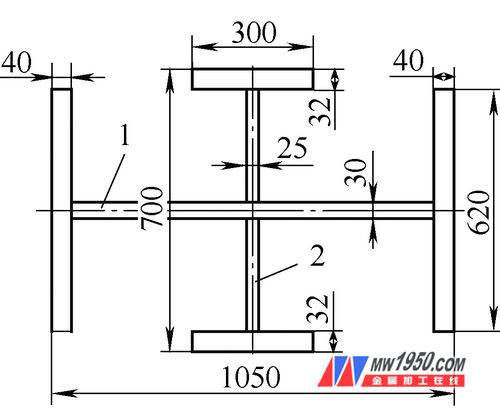
Figure 1: Structure of the "Ten" shaped steel member. 1. H-shaped steel, 2. T-shaped steel
3. Scope of Application
This method is suitable for welding low carbon steel, high-strength steel, and ordinary cast steel. It can be applied to the processing and manufacturing of "ten" shaped steel members in building structures. The process includes selecting the appropriate technology, marking out, cutting, fabricating H-beams and T-beams, correcting deformations, machining edges, assembling and welding the "ten" column, welding the top and bottom plates, straightening, numbering, shot blasting, inspection, and final delivery.
4. Process Principle
The method utilizes an automatic H-shaped steel production line. First, the web is cut intermittently to create H-shaped steel. Then, the reserved parts are cut into T-shaped steel, forming the "T" shaped member. After CNC cutting, the steel plates are paired on an H-beam assembly machine. CO2 gas shielded welding is used for the base and submerged arc welding for the cover welds in an automatic ship-shaped position. After welding inspection, the H-beam is corrected using a flange correction machine. The components required for the "ten" shape are assembled on a tire frame, and the middle welds are formed using CO2 primer, submerged arc welding, and cover welding.
5. Construction Process
(1) The process flow includes refining the workflow, marking and cutting, manufacturing H-beams and T-beams, assembling the "ten" shaped components, welding the web, performing ultrasonic testing, correcting deformations, assembling accessories, cleaning and rust removal, painting, product inspection, and storage and delivery.
The "ten" shaped columns at Jifeng Power Plant are 60.42 meters long, making them difficult to manufacture and transport. Therefore, they were divided into two sections by the design and owner units, then delivered to the site for assembly. The factory production process is illustrated in Figure 2.
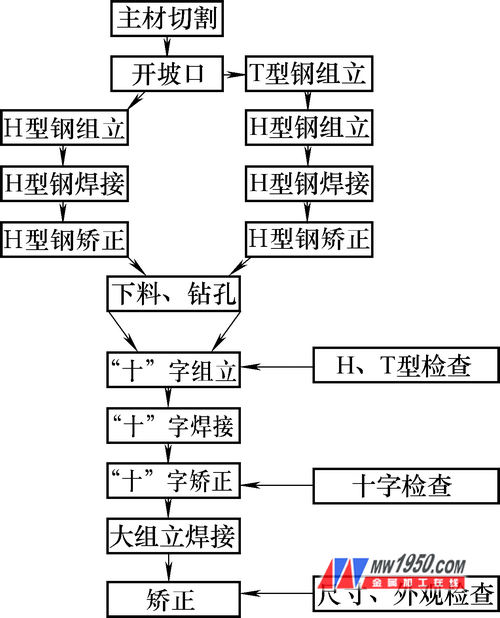
Figure 2: Production process of the "ten" shaped steel component
(2) Welding methods and material selection: Steel components are produced in two parts in the factory and transported to the site for assembly. To improve productivity and reduce deformation caused by welding stress, small groove and low-energy input welding methods are used. CO2 gas shielded welding is used for positioning and bottom welding, while submerged arc welding is used for the cover weld. The welding wire for CO2 gas shielded welding is ER50-6 (φ1.2mm), with CO2 as shielding gas. Submerged arc welding uses H08MnA (φ4.0mm) with HJ431 flux.
6. Operational Procedure
The assembly of "T" shaped members involves three steps: producing H-shaped steel, producing T-shaped steel, and assembling the "T" shaped components.
1. Blank cutting: Parts are cut using a CNC flame cutting machine. Wings and webs of "ten" shaped members are cut on both sides using a CNC straight strip cutting machine. Irregular parts are handled using profiling and semi-automatic cutting machines. A trial piece is tracked during the cutting process.
2. When cutting, add a 30mm welding shrinkage allowance to the length of the flange plate and web, but no allowance in the width direction. If the length of the wing or web needs to be extended, the minimum length should exceed 600mm, and the number of joints per part should not exceed two. Ensure proper placement and spacing of seams (>200mm).
3. After blanking, mark the material with color codes, including the engineering name, steel plate specification, and part number. Store the parts properly. The groove shape is shown in Figure 4.
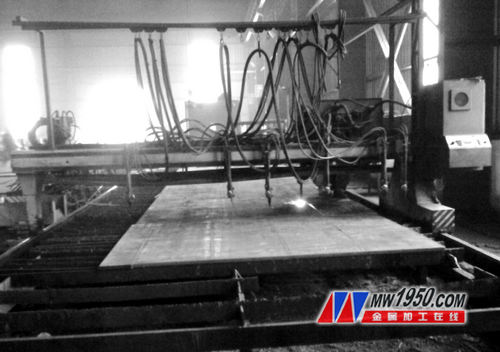
Figure 3: Real scene of CNC flame straight strip cutting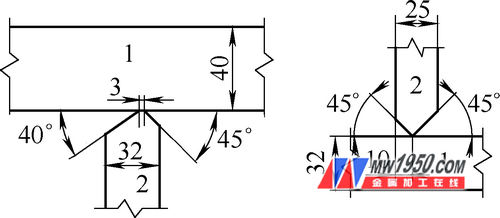
Figure 4: Groove form and size indication of H-shaped and T-shaped steel. 1. Flange plate, 2. Web
2. H-steel production: H-beams can be assembled and positioned using an H-beam assembly machine. CO2 gas shielded welding is used for positioning, with a weld length of 40–50mm, leg size ≤5mm, and spacing of 300–400mm. The section size of H-beams must meet design requirements, with error limits complying with GB50205-2001 standards. The vertical process of H-beam automatic assembly is shown in Figure 5. H-beam welding is done using a gantry-type submerged arc welding machine. Flux is baked according to the process before welding, and arc-extinguishing plates are placed at both ends of the member. The welding scene is shown in Figure 6. H-beam correction is mainly done using an H-shaped steel flange correction machine when the flange thickness is less than 60mm. For thicker flanges, a reasonable welding sequence is used, supplemented by manual flame correction.

Figure 5: H-beam and double T-shaped steel assembly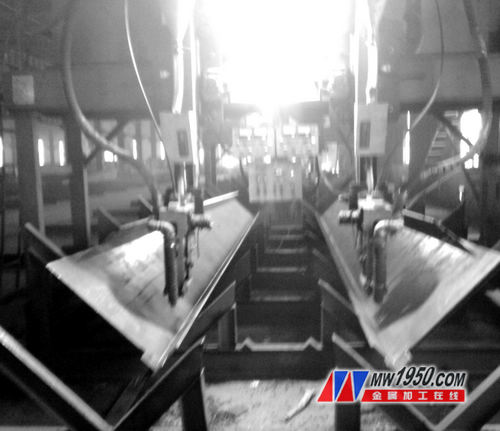
Figure 6: Real scene of H-beam submerged arc welding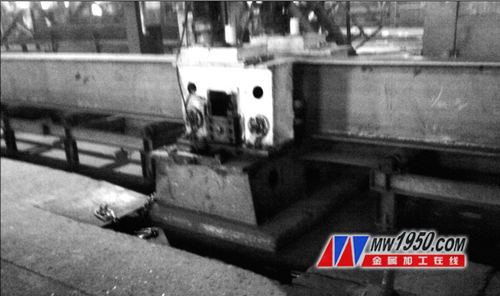
Figure 7: H-beam flange correction
3. T-steel production: T-shaped steel web blanking involves combining two T-shaped steel webs into one group, cutting intermittently at the center (cut 1.5m, leave 30mm without breaking). After H-beam welding and correction, the reserved part is split into two T-shaped steels. The production of double T-shaped steel is shown in Figure 8.
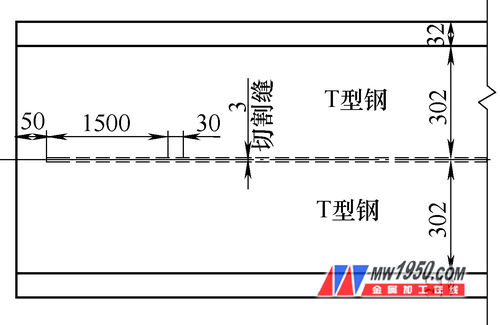
Figure 8: Production of double T-shaped steel
4. Equipment selection for "ten" shaped member formation: The "ten" shaped members can be assembled manually on a tire frame, as shown in Figure 9. Positioning is done using CO2 gas shielded welding. The height of the positioning weld is ≤ 2/3 of the designed weld bead height. The length of the positioning weld is 40–60 mm, with a spacing of 400 mm. The formation of the "ten" shape involves determining the assembly reference line. After the H-beam and T-beam (already formed into H-beam) are welded and corrected, the reference line is established on the end web, marked, and used for support. Preliminary positioning, assembly, and positioning of the process support bar are performed. The "ten" shaped member, along with the support rib plate, is assembled using the reference line and support bar. The assembly of "T" shaped members must be completed on the tire frame, with jacks pressed tightly between components. Spot welding between components is 40–60 mm, with a weld angle of 6 mm and spacing of 300–400 mm.

Figure 9: Assembly of "ten" shaped member. 1. Installation platform, 2. Tooling support, 3. Hydraulic cylinder, 4. "Ten" column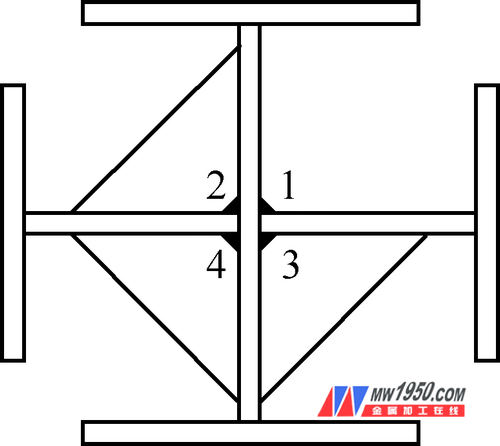
Figure 10: Schematic diagram of the ten-shaped member ribs. Note: 1–4 are welding sequences
The allowable deviation of the "ten" shaped assembly is shown in Table 1.
Table 1: Allowable deviation of "ten" column
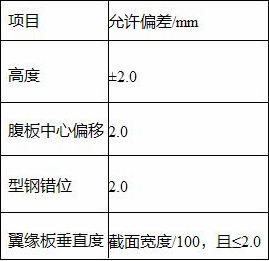
5. Welding of the "ten" shaped member: The welding is done using CO2 gas shielded welding, submerged arc welding, and capping. The welding process is shown in Figure 11. Prepare the welding area, add leading and quenching plates, and clean the welding area. Select welding parameters as shown in Table 2. To control deformation during welding, follow the welding sequence in Figure 12 and make adjustments as needed. After welding, remove the process ribs and clean and polish the components.
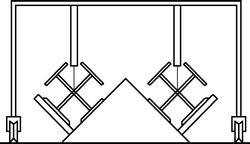
Figure 11: Welding of the ten-shaped member
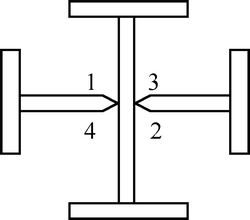
Figure 12: Welding sequence of “Ten†type components. Note: 1–4 is the welding sequence
Table 2: CO2 gas shielded and submerged arc welding parameters
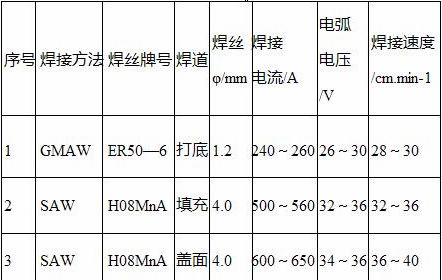
6. Correction of the "ten" shaped member: The correction of the "ten" column requires the use of jacks and flame correction, avoiding hammering or forced correction. When correcting distortion, fix one end and correct the other with a jack. The correction method is shown in Figure 13. During heating, pay attention to the orientation of deformation and maintain the temperature between 600 and 800°C.
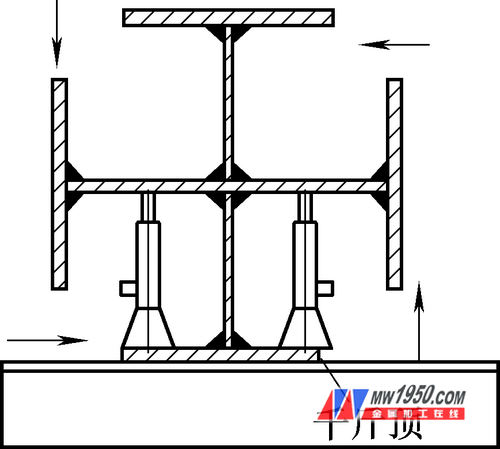
Figure 13: Correction of "ten" shaped steel column
After correction, trim the upper end of the "T" shaped member to control the length of the component.
7. Assembling and preparation for the "ten" component: Before assembling the parts, ensure that they have been inspected and cleaned, free of burrs and gaps. Confirm the part numbers, directions, and dimensions before assembly. Check the quantity and specifications of the assembled "ten" component body and confirm that local repairs and bending/torsion deformations have been adjusted. "Ten" shaped components are large. Place the steel component body on the assembly platform, determine the horizontal reference, and scribe the body based on the position and size of each component on the drawing. Include the center line and reference line in the markings. Use double-line logos for clarity and accuracy to avoid dimensional deviations due to unclear lines. Assemble and weld the components according to their position in the structure, ensuring optimal welding positions and quality control. Assemble the components on the platform.
8. Assembly method of the steel component's bottom plate: First, establish the horizontal platform and adjust its level. Then, draw the "ten" centerline and cross-sectional shape on the bottom of the column. On the horizontal tire frame, assemble the column bottom plate and steel component body on the line, ensuring that the bottom plate is perpendicular to the body and confirmed via wire drop. After completing the assembly of the "ten" component, mark the steel column’s center line with red paint on the bottom plate as required, and accurately check the assembly direction.
7. Materials and Equipment
(1) Material Requirements: Steel materials, welding materials, and coating materials used in steel structures must have quality certificates and meet design requirements and current national standards.
In addition to the production plant’s quality certificate, raw materials entering the factory must be witnessed, sampled, tested, and inspected under the supervision of the contract and relevant standards, with inspection records made. Provide test reports to Party A and the supervisor.
(2) Equipment required for fabricating "ten" shaped steel components is listed in Table 3.
Table 3: Main equipment usage
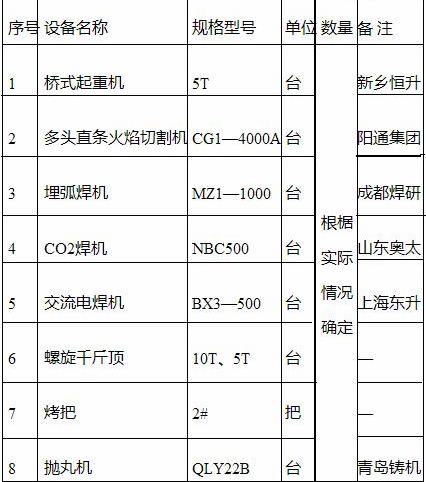
8. Quality Assurance Control
(1) Specifications include: Technical specifications for welding in standard building steel structures (JGJ81-2002, J218-2002); Construction quality acceptance specification for steel structure engineering (GB50205-2001); Quality inspection and evaluation standard for steel structure engineering (GB50221-1995); Carbon steel welding wire and flux for submerged arc welding (GB/T5293-1999); Ultrasonic flaw detection method for steel welds and classification of flaw detection results (GB11345-1989).
(2) Quality assurance measures: Strictly implement the company’s quality assurance manual and procedure documents to prevent violations of the construction process. Clarify quality responsibilities at each stage and ensure implementation at all levels. Welders and quality inspectors must be certified. Conduct welding process evaluations and determine process parameters. Perform spot weld tests for welders. Maintain strict welding quality, keep a welding construction diary, and organize welder files.
9. Labor Organization and Safety Protection
(1) Labor organization includes: 1 person, 2 welders, 4 riveters, 1 lifting crane, 1 inspector, 1 milling machine, and 1 safety officer.
(2) Safety protection: On-site personnel must strictly follow the current national "Construction and Installation Engineering Technical Regulations" and on-site safety technical protection measures and regulations. Emphasize the following points: Special types of workers, such as welders and cranes, must be trained and certified after passing exams. Each beam (column) weighs about 5t. Always check the safety of the wire rope during lifting and transportation. Operators should prevent burns. Ensure a comprehensive and skilled electrician is available for service.
10. Project Examples and Benefit Analysis
In the national "863" plan key research project "600MW coal-fired power station semi-dry desulfurization and dust removal integrated technology and equipment", relying on the Huaneng Qifeng Power Plant 2 × 660MW dry desulfurization and dust removal integrated renovation project, this method was applied. The project used more than 10,000 tons of steel, with 126 "ten" shaped steel members, each weighing about 55.1 tons. The "ten" shaped components were successfully produced, achieving excellent results.
This method effectively solves special technical challenges in the production of "ten" shaped components, providing a complete and mature construction process. It not only saves labor, improves production efficiency, shortens the construction period, but also achieves significant economic and social benefits.
Deep Groove Ball Bearing advantages
Yuyao Shuguang stainless steel bearing Co., LTD , https://www.shuguangbearing.com